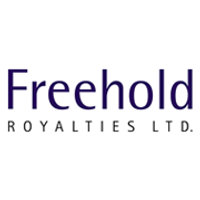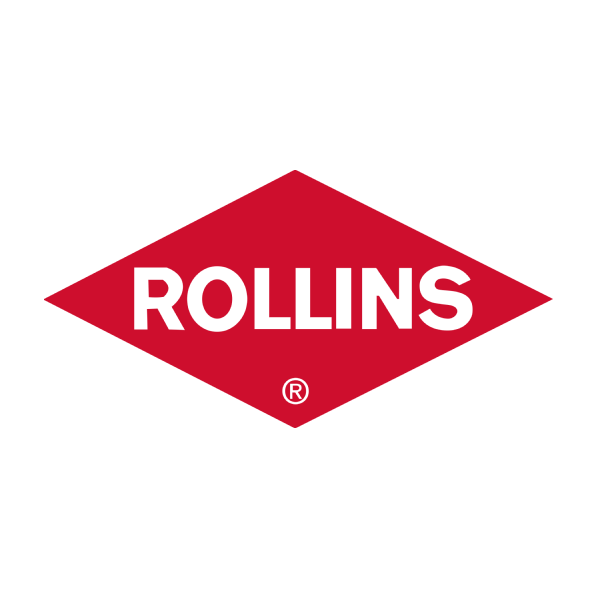
Freehold Royalties Ltd
TSX:FRU

Earnings Call Analysis
 Q3-2023 Analysis
Freehold Royalties Ltd
Q3-2023 Analysis
Freehold Royalties Ltd
In the story of the third quarter for Freehold, we begin with a narrative of consistency and growth. The revenue held steady at $84 million, with a production of 14,605 Barrels of Oil Equivalent per day (BOE/day), marking a modest 3% increase from the same period in the previous year. Keeping a keen eye on financial health, the company proudly reduced its net debt by 18%, down to $107 million. Alongside this prudent debt management, shareholders enjoyed an 8% increase in dividends compared to 2022, with a total of $40.7 million disbursed, reinforcing the company's commitment to shareholder returns.
The plot thickens with a record-setting number of gross wells drilled on Freehold's royalty lands, totaling 779 for the first nine months of the year. This level of activity not only underscores the company's vibrant present but also sets the stage for sustainable future growth. Particularly in the U.S., drilling focused on the prolific oil regions of the Permian and Eagle Ford basins, where despite a general decline in rig activity, Freehold has maintained more than 20 rigs active on its land.
Looking to the horizon, Freehold anticipates continuing the rhythm of robust performance. Southeast Saskatchewan emerges as a rising star, with Mississippian oil production peaking at two-year highs, and new leasing activities in the area suggesting a bright future for production and revenue in the forthcoming quarters. The newly signed leases, averaging a royalty interest nearly four times that of previous wells, promise to make a significantly greater contribution to the company's bottom line.
Hidden.
Hidden.



























 You don't have any saved screeners yet
You don't have any saved screeners yet

Good morning, ladies and gentlemen. Welcome to the third quarter results conference call. I would now like to turn the meeting over to Mr. David Spyker. Please go ahead, sir.
Good morning, everyone, and thank you for joining us today. On the call from Freehold are David Hendry, our CFO; and Rob King, our Chief Operating Officer. So we've had a good third quarter, highlighted by growing U.S. production volumes, active drilling programs across North America and an 18% reduction in net debt. Production of 14,605 BOE a day was in line with the previous quarter, and up 3% versus the same period in 2022. Growth in volumes was due to drilling from our third-party payers, leading to organic oil-weighted growth, most notably within our U.S. portfolio.
U.S. production in the quarter averaged 5,427 BOE a day, eclipsing the previous U.S. production record by 160 BOE a day, which was set in Q4 last year. The 12% quarter-over-quarter growth was driven by several high-impact multi-well pads being brought on stream and higher net royalty interest wells being turned in line. Freehold's Canadian portfolio saw a slight production decline quarter-over-quarter, and this was primarily due to a negative prior period adjustment, as wildfire impacted areas were off-line in June longer than originally estimated.
Our revenue of $84 million was in line with expectations, generating funds from operations of $65 million or $0.43 per share. Realized pricing of $61.55 per BOE continues to benefit from the premium pricing associated with our U.S. portfolio. In the U.S., we realized a 34% uplift over our Canadian realized pricing during the same period. And this is due to both quality and weighting our production mix to oil as well as proximity to sales points, which significantly reduces pipeline transportation costs.
We reduced our net debt by $23 million or 18%, ending the period at $107 million or 0.4x trailing funds from operations. We continue to maintain significant financial flexibility. We paid $40.7 million to our shareholders in dividends or $0.27 a share, up 8% versus the same period in 2022. Dividend payout for the period was 62%, and we believe our dividend is rightsized and provides freehold of flexibility to continue to reduce leverage or pursue value-enhancing acquisitions as we continue to see a strong set of opportunities on both sides of the border.
During the first 9 months of this year, 779 gross or 14.1 net wells, were drilled on our North American royalty lands, representing the highest level of gross drilling activity through the first 3 quarters of the company's 27-year history. For the quarter, we had 251 gross or 4.6 net wells drilled with 90% of these wells targeting oil prospects. In Canada, we had 116 gross, 3.9 net locations drilled.
Activity was slower in Q3 2023 relative to Q3 last year, relating in part to reduced gas well drilling activity. On the oil side, we are seeing increased activity and capital programs as we go into year-end. In the U.S., 135 gross wells were drilled on our royalty lands, which compares to 157 gross wells during the same period last year and 124 gross locations during the previous quarter. Given the composition of our U.S. portfolio, which is greater than 60% investment-grade payers, we see sustained development on our lands with more than 13 years of multi-zone oil-weighted drilling inventory.
Our U.S. operators have been focused on drilling light oil prospects in the Permian and Eagle Ford with 83% of the activity within these basins. In total, we had 71 gross locations starting prospects in the Permian and 35 gross locations in the Eagle Ford. We also continue to see activities associated with the Bakken and Haynesville plays. We've had significant leasing activity through our Canadian portfolio in 2023, with nearly half of the 102 new leases issued for the first 9 months of this year, targeting Mississippian oil in Southeast Saskatchewan and Mannville oil in Alberta.
We continue to see a revitalization of our Southeast Saskatchewan light oil and heavy oil portfolios with several well-capitalized, growth-oriented junior producers focusing in these areas. Multilateral drilling has also been a focus by operators in both Southeast Saskatchewan and the heavy oil areas with aim to improve both well productivity and oil recovery. We continue to highlight the sawtooth nature of our U.S. production driven both by pace of activity and variation with our royalty interest across our land base.
As [indiscernible] flush production associated with the shale plays, we continue to build a low decline underlying asset base. As the drilling continues on our lands, this asset base will continue to grow. On a gross basis, we had a number of new pads in the Midland Basin and Eagle Ford contribute gross production of 50,000 to 60,000 BOE a day or approximately 350 BOE net to Freehold over the period from high-quality operators such as Pioneer, Exxon and EOG.
Additional contribution to our robust U.S. volumes came from well outperformance relative to our type curves and higher-than-expected completion activity. On an annual basis, we expect our U.S. portfolio to provide organic growth of approximately 3% over the next 12 months, aligned with third-party projections of production growth in the U.S. oil-producing basins. We're very excited about the position of strength we are in, given the quality, diversity and long duration characteristics of our portfolio. We continue to unlock value as new technology is being deployed. New reservoir benches are being tested and brought on production and operators continue to lease and drill on our extensive land base.
Looking forward, we continue to expect robust performance from our assets, generating significant funds flow to underpin our sustainable dividend, maintain our balance sheet strength and to fund further growth opportunities on both sides of the border. We'll now take the time to answer any questions that you may have. Thank you.
[Operator Instructions] The first question is from Luke Davis.
Wondering if you can provide some details on leasing activity, just expectations for how that impacts volumes through the balance of this year and into 2024. And if you can just provide some details on the types of counterparties and just general activity plans that you're seeing.
Sure. Luke, it's Rob here. So as we said, about 102 leases that we signed with 33 counterparties in up to Q3. The pipeline is continuing to grow. But we're going to move well past our record levels of leasing activity at the end of this year. Most of that, about 50% has been in Southeast Saskatchewan, I'll come back to that in a minute and about 25% with Mannville heavy.
We've already seen about a half a dozen wells that have been drilled already on these leases. And I think something that we will certainly work with the lessees to try and encourage active drilling on them. In fact, got a dozen of the leases, we actually have a well commitment associated with it. In terms of who the makeup of those people who we've taken leases with us, 90% have been some private, junior type companies.
I think coming back to Southeast Saskatchewan comment. I think that area of activity is going to be a bright spot for us in Q4 and into '24. Right now, our Mississippian oil is actually reaching 2-year highs. We're over 900 BOEs a day of oil production in that play. And as mentioned, that's where 50% of our leases that we've signed this year have been focused.
The last comment I'd make is just as it relates to thinking about '24 activity. When you think about the 346 gross wells that have been drilled on our lands in 2023. That's about an average 4% royalty interest. These leases that we're signing, the average is close to 16%. So they're also going to have a much more meaningful impact on a net basis.
The next question is from Jamie Kubik.
So we've seen a pretty good drop in overall U.S. rig activity in the Permian and the Eagle Ford over the past year. Can you just talk a little bit about what you're seeing on your acreage in real time here and what you have sort of baked into your forward plans for production growth in the U.S.
Yes. Rob here, again. So yes, we got a little over 20 rigs that are active on our lands right now on the U.S. And that's really -- that is in line with 2022 levels. Maybe a bit of a broader Midland Basin comment. I think we've seen -- it may actually just how efficient rigs and completions are getting and that give an example, right now in overall Midland, there's about 120 rigs operating in that basin which is about 15% lower than the average in the first half of this year.
But with that 120 rig count, look, we're still expecting to see mid-single-digit year-over-year oil growth in the Midland Basin. And I think it's when we've looked at our type curves in the 2 basins in the U.S. that are most relevant to us. Eagle Ford and Midland, we've actually not seen degradation in the BOE per day type curve. We do know that operators are pushing longer laterals. They're having more frac intensity on the completions, but they're still being able to keep that degradation at Bag by doing some different drilling operations.
On the Eagle Ford, I think we've actually seen most of our land, 70% of our activity in the Eagle Ford is with Marathon and the Core Karnes Trough area. And there, we've seen no degradation at all in their well results over the last 4 years. I think where we have seen a little bit of degradation outside of Marathon's acreage in the Eagle Ford, and this has probably been more a symptom of companies like SilverBow or [indiscernible] who are actually targeting oilier wells just given pullback in gas pricing. So have seen less BOEs there, but more barrels of oil being coming out of the Eagle Ford wells.
Okay. And then maybe just a follow-on question. We've seen some major U.S. consolidation take place over the last couple of months. Can you talk about how you think that impacts activity on your lands? Or is it too early days?
Yes. I mean it certainly is early days, but I think we're pretty encouraged, I'd say, again, in the Midland Basin side. Most of our biggest exposure from a development upside perspective would be under Pioneer, and it's certainly one where Marathon -- Exxon's perspective on growth have certainly been differentiated relative to what Pioneer was saying. They sort of talked about less than 5% oil growth and with Exxon talking about 10-plus percent production growth over the next few years, so we'll see. Pioneer's got lots of great acreage, and we certainly aren't under everything that they have. But the combination of Exxon and Pioneer has put Exxon into our top 10 payers on a corporate basis.
[Operator Instructions] We do have a few questions. so sorry. May I, Mr. Spyker?
Yes. Please proceed with questions.
The next question is from Chris Jones.
Just thinking about consolidation opportunities. Can you speak to what level of deal flow you're seeing and the bid-ask spreads? And can you remind us of some of the boxes that need to be checked when you look at acquisitions?
Thanks, Chris. Yes, in the quarter, we've looked at a little over 20 deals came across all of our desks. It was consistent with levels that we saw in Q1 and Q2 of this year. I'd say the value of the opportunities did go up. There's a few sort of very meaningful sized opportunities that we did review. 80% of those deals would have been in the U.S., 20% in Canada. We actually -- even though we looked at a little over 20 deals, we only dug in about half of those and then only bid on half of that number again.
So I think we've been encouraged, I would say, with the deals that we're looking at in Q4. That's both in terms of the number of opportunities, but more importantly, the quality of the opportunities. And look, it is very competitive, and we're continuing to make sure that the opportunity, anything that we had really adds value on a near-term, long-term basis and makes us a better company.
I think when we're looking at a lot of these opportunities in Q4, in particular, that quality comment, we've been encouraged that a lot of it has been in Core Midland Basin and Core Delaware Basin. And I think it's one where there's been a few opportunities that we've been pretty encouraged by that just how much under and undeveloped opportunity set is within it. So like you can really see tangible perspective on what kind of production growth you may get from that.
Thank you. The next question is from Travis Wood...
Sorry, you may have answered this, but I wanted to get an understanding on some of the well performance, I think over the last few years, we've heard some commentary that type curves are lagging expectations, which I don't think is completely accurate. So apologies if you already touched on that from Jamie's question. And if you did, then maybe just expand on more so how that relates to you? And could there be maybe broken telephone in terms of what that actually means? And could it be more of a capital cost eroding economics background rather than well performance in EURs itself?
Yes. Yes, Jamie -- I'm sorry, Travis. Jamie did ask that question. So maybe I'll just kind of touch on the incremental comments there. Probably -- but probably the biggest one is sort of impacting that, again, when we've looked at our type curves on our assets, in particular, in the Eagle Ford and in the Midland Basin, which is the two most relevant basins for Freehold in the U.S. And the wells that have been drilled on our lands, we haven't seen a degradation in those type curves over the last 4 years. And that includes, call it, the first 3, 6 months of 2023, where we have enough data to be able to take a perspective on that.
Certainly, we have been seeing operators pushing longer laterals, and you certainly have seen that on -- I heard that on earnings calls and the operators putting more frac intensity into the reservoir. So that does factor into capital efficiencies. And when we look on a BOE per day basis, and again, we've sort of seen a very similar level of productivity.
There are no further questions. I would now like to return the meeting back over to Mr. Spyker.
Thanks, everyone, for the time today and the participation in our conference call. We look forward to continued growth and development on our assets and catching up again with the Q4 results. Thank you.
Thank you. The conference has now ended. Please disconnect your lines at this time. We thank you for your participation.